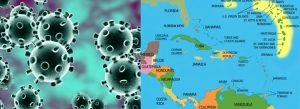
[Reprinted: The Lancet Global Health, 7/2/2020]
The UN recognises 58 small island developing states, with 29 in the Caribbean. The World Bank classifies most of the Caribbean islands as middle-income or high-income countries, and the UN Human Development Index is generally categorised as high across the region (2018 values range between 0·7 and 0·8).
Despite these positive development indicators, the Caribbean small island developing states share a common set of environmental, economic, and social vulnerabilities because of their absolute size and geographical remoteness.
The resources available to individual small island developing states limits their capacity to prepare for, and respond to, acute environmental and health emergencies. The Global Health Security Index—measuring the national capacity to prevent, detect, and respond to public health emergencies—is below 40·0 across the Caribbean (average of 32, range 24–38) against a global average of 40·2 and an average among high-income nations of 51·9.
The seasonal hurricane threat has always framed life throughout the Caribbean. Atlantic basin hurricane activity, measured by the accumulated cyclone activity index, has been high. Since 2000, 12 years have been informally classified as above normal, and in 2017 and 2019 hurricanes Irma, Maria, and Dorian devastated national infrastructures across ten Caribbean islands. Three of the 10 countries most affected by extreme weather events over the past 20 years are in the Caribbean (Puerto Rico, Haiti, Dominica).
Partly in response to these threats and vulnerabilities, the Caribbean has a history of regional collaboration. Since 1973, the Caribbean Community (CARICOM) has provided this collaborative framework, and two intergovernmental agencies lead the regional support structures for disaster preparedness and response (Caribbean Disaster Emergency Management Agency) and for public health (Caribbean Public Health Agency).
The first confirmed case of COVID-19 among the 20 CARICOM member states presented in Jamaica on March 10, 2020, and by June 17 there were 6421 confirmed cases and 152 confirmed deaths among these 20 members. Haiti dominated these numbers, with 4547 confirmed cases (71% of all CARICOM cases) and 80 confirmed deaths (53% of all CARICOM deaths). In the 14 weeks since the start of the CARICOM outbreak, national outbreak growth rates have been low: 11 member states have kept their peak growth rate below 10%, and among the remaining 9 members, peak rates ranged between 13% and 24%. Currently, only Haiti is classified as having community case transmission.
This transmission profile compares favourably internationally, particularly when compared with South America and central America, which experienced outbreak onset over a similar time period (Latin American countries confirmed their first cases over a 22 day period between Feb 26 and March 19; CARICOM members over a 17 day period between March 10 and March 27). Comparing the two subregions on June 17, 2020, outbreak growth among the 20 CARICOM member states has flattened after a short initial period of growth, whereas outbreak growth among the 17 countries in central America and South America continues.